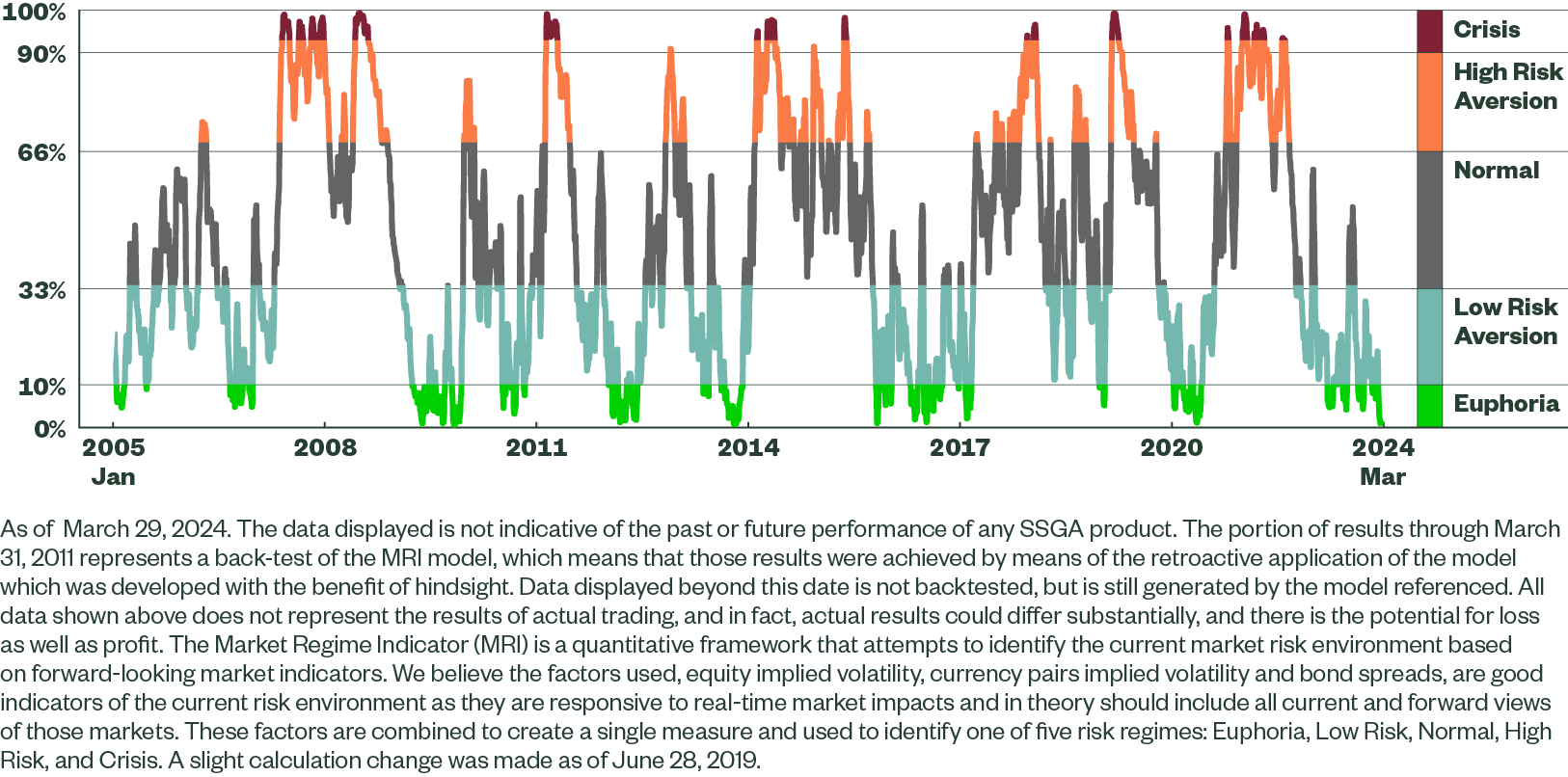Marketing Communication
ssga.com
State Street Global Advisors Worldwide Entities
This document is confidential. It is intended only for the person to whom it is addressed. These materials are only meant for qualified/ institutional clients and are not meant for retail distribution. Clients should conduct their own due diligence on the SSSAFS and the financial services marketed. If you do not understand the contents of this document you should consult an authorized financial adviser.
Investing involves risk including the risk of loss of principal. The whole or any part of this work may not be reproduced, copied or transmitted or any of its contents disclosed to third parties without SSGA’s express written consent. Equity securities may fluctuate in value in response to the activities of individual companies and general market and economic conditions.
Bonds generally present less short-term risk and volatility than stocks, but contain interest rate risk (as interest rates rise bond prices usually fall); issuer default risk; issuer credit risk; liquidity risk; and inflation risk. These effects are usually pronounced for longer-term securities. Any fixed income security sold or redeemed prior to maturity may be subject to a substantial gain or loss.
SSGA uses quantitative models in an effort to enhance returns and manage risk. While SSGA expects these models to perform as expected, deviation between the forecasts and the actual events can result in either no advantage or in results opposite to those desired by SSGA. In particular, these models may draw from unique historical data that may not predict future trades or market performance adequately. There can be no assurance that the models will behave as expected in all market conditions. In addition, computer programming used to create quantitative models, or the data on which such models operate, might contain one or more errors. Such errors might never be detected, or might be detected only after the Portfolio has sustained a loss (or reduced performance) related to such errors. Availability of third-party models could be reduced or eliminated in the future.
The views expressed in this material are the views of Investment Solutions Group through the period ended 30 September 2023, and are subject to change based on market and other conditions. All information is from SSGA unless otherwise noted and has been obtained from sources believed to be reliable, but its accuracy is not guaranteed. There is no representation or warranty as to the current accuracy, reliability or completeness of, nor liability for, decisions based on such information and it should not be relied on as such. This document contains certain statements that may be deemed forward-looking statements. Please note that any such statements are not guarantees of any future performance and actual results or developments may differ materially from those projected.
The information contained in this communication is not a research recommendation or ‘investment research’ and is classified as a ‘Marketing Communication’ in accordance with the Markets in Financial Instruments Directive (2014/65/EU) or applicable Swiss regulation. This means that this marketing communication (a) has not been prepared in accordance with legal requirements designed to promote the independence of investment research (b) is not subject to any prohibition on dealing ahead of the dissemination of investment research.
This communication is directed at professional clients (this includes eligible counterparties as defined by the appropriate EU regulator or applicable Swiss Regulator) who are deemed both knowledgeable and experienced in matters relating to investments. The products and services to which this communication relates are only available to such persons and persons of any other description (including retail clients) should not rely on this communication.
The information provided does not constitute investment advice and it should not be relied on as such. It should not be considered a solicitation to buy or an offer to sell a security. It does not take into account any investor’s particular investment objectives, strategies, tax status or investment horizon. You should consult your tax and financial advisor. Past performance is not a guarantee of future results.
© 2024 State Street Corporation.
All Rights Reserved.
Ad Trax: 4708815.11.1.GBL.RTL
Exp. Date: 04/30/2025
